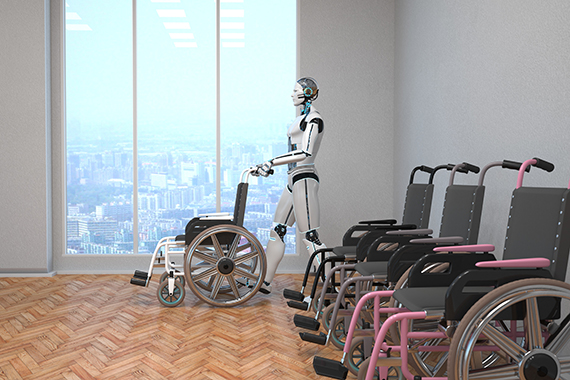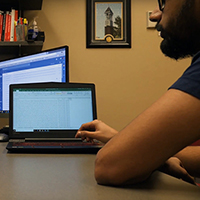
Advanced Care
Will technology replace nurses? Not necessarily ...
Nurses have many duties, but none is more important than providing bedside care to patients. Even so, nurses have traditionally spent a large portion of their workdays on other tasks, including searching for supplies, filling out paperwork and ordering medicine.
In recent years, however, the adoption of technologies such as the computerized provider order entry (CPOE) has significantly eased the paperwork burden on nurses, giving them more time to spend on direct patient care. But information technology (IT)-enabled automation isn't always a boon to nurses.
A research study co-authored by Susan F. Lu, an associate professor of management in Purdue’s Krannert School, shows that some nurses may lose their jobs when automation arrives at their workplaces. But the reverse may happen at other health care facilities: New technology may spark the hiring of more nurses.
It all depends on where the facility falls in the spectrum of quality. If it's already providing great care, it’s more likely to cut nursing jobs when IT-enabled automation is adopted, but if it’s on the lower end of the quality range, it’s more likely to increase staffing.
Lu and her co-authors, Huaxia Rui and Abraham Seidmann of University of Rochester’s Simon Business School, explain why this happens in their research study, ‘‘Does Technology Substitute for Nurses? Staffing Decisions in Nursing Homes,’’ published in Management Science.
Focusing their study on nursing homes and using IT data from 2006 to 2012, the researchers found that licensed-nurse staffing levels in high-end nursing homes decrease by an average of 5.8 percent after the adoption of CPOE. At low-end nursing homes, they increase by an average of 7.6 percent.
The interplay of two competing effects — substitution and complementarity — determines whether a nursing home will hire more licensed nurses or reduce its staff. The substitution effect occurs when nursing labor is substituted by technology. The complementarity effect occurs when technology improves nurse productivity enough that a nursing home can significantly boost its overall quality and market position by hiring more nurses. Technology magnifies the benefit of hiring even a single nurse.
In low-end nursing homes, the complementarity effect dominates the substitution effect.
‘‘The low-end nursing homes can use the advantage of technology adoption to improve their competitive advantage in the market,’’ Lu says. ‘‘With the help of technology, their nurses can spend more time with patients at the bedside, which improves their care quality andcan attract more patients, especially the profitable ones. As a result, they think that hiring more nurses is better for the development of the nursing home.’’
In high-end nursing homes, the complementarity effect isn’t very strong, largely because their beds are already taken. ‘‘Even if they improve their quality, it doesn’t help them increase the number of lucrative patients,’’ Lu says. ‘‘So they don’t have great incentive to have higher quality than what they had before, because they’re already at capacity.’’
With all their beds filled and little incentive to improve quality, these high-end nursing homes try to become more profitable by reducing costs. ‘‘They think they can reduce the number of nurses, but maintain their quality level with the help of technology,’’ Lu says. ‘‘They have enough lucrative patients, so attracting more patients doesn't help them too much.’’
Another significant finding is that automation allows nursing homes to admit fewer Medicaid residents and more Medicare and private-pay residents, who are more profitable and expect higher-quality care.
‘‘When some nursing homes’ quality improves, profitable patients will switch to high-quality homes,” Lu says. “And less profitable patients will move to low-quality nursing homes. So in general, the market is in equilibrium.’’







